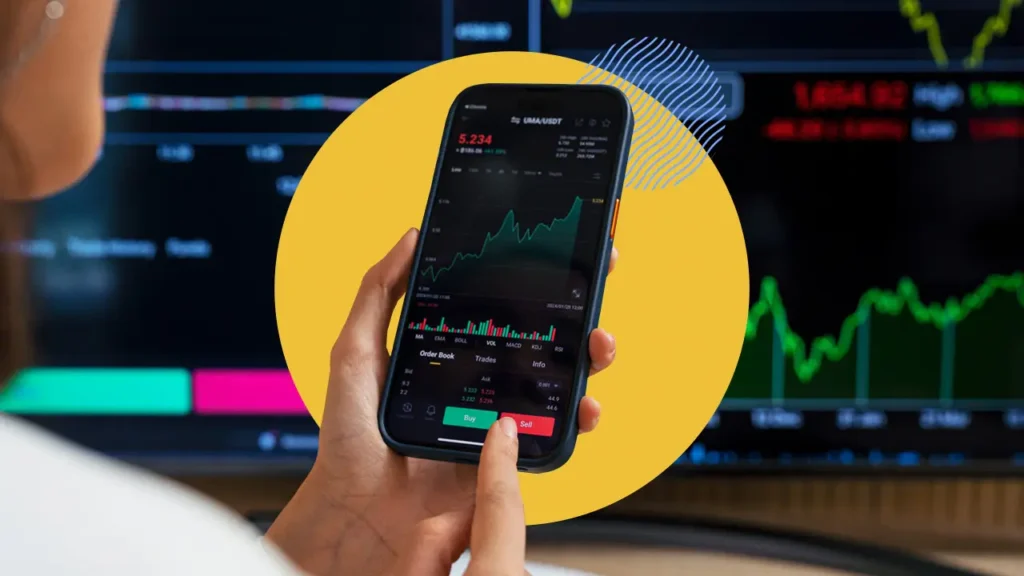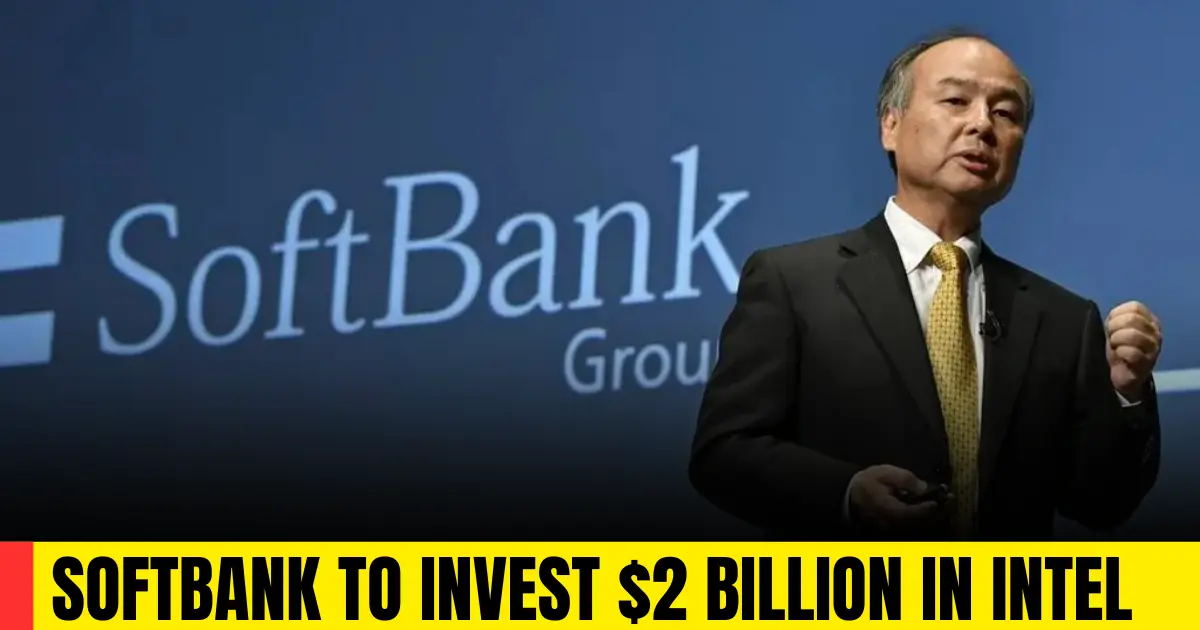SoftBank will invest $2 billion in Intel, giving the struggling chipmaker a boost as it faces rivals and U.S. government interest. Here’s why this matters for tech and the economy.
Table of Contents
SoftBank Will Invest $2 Billion Into Intel
Introduction
The chip war just got a new twist. On August 18, Japan’s SoftBank announced it will invest $2 billion into American semiconductor giant Intel, in a deal that could reshape the future of the chip industry. Intel, once a titan of computing, has been struggling to keep up with rivals in recent years. This investment, however, could mark a turning point.
SoftBank is no stranger to big bets in technology — the Japanese investment powerhouse has previously backed global disruptors like Alibaba and ARM. Now, by stepping into Intel’s corner, it’s signaling confidence that the American chipmaker can bounce back.
For young tech enthusiasts, gamers, and investors, this news isn’t just about numbers on a stock chart — it’s about the future of AI, PCs, cloud computing, and national security. Let’s break down what this $2 billion deal really means.
The Deal: $2 Billion at $23 Per Share
SoftBank will purchase Intel common stock at $23 per share, according to the companies’ joint statement. That instantly boosted confidence: Intel shares jumped 6% in after-hours trading after the announcement.
For context, Intel’s stock has been lagging compared to rivals like NVIDIA, AMD, and Taiwan Semiconductor (TSMC). So SoftBank’s move is more than just cash — it’s a vote of confidence that Intel still has the ability to compete in the next generation of chips.
Why Intel Needs the Help

Once the undisputed king of microprocessors, Intel has slipped behind. The company struggled to transition to advanced chip designs, while competitors like NVIDIA capitalized on the booming AI and graphics processing market.
Intel’s delays in manufacturing and strategic missteps left it vulnerable. Today, it’s not only fighting rivals in the private sector but also navigating geopolitical pressure, as semiconductors are at the center of U.S.-China tech tensions.
Intel’s new CEO, Lip-Bu Tan, who took over in March, has been attempting a major turnaround. His plan has included:
- Laying off 15% of Intel’s staff (nearly complete as of last month).
- Refocusing on AI chips, cloud processors, and cutting-edge manufacturing.
- Trying to restore Intel’s reputation as a key U.S. tech leader.
SoftBank’s cash infusion could provide the momentum Intel needs to stabilize and compete again.
Why SoftBank Is Betting Big
SoftBank has a history of bold investments. From Alibaba to ARM, the Japanese giant often places huge bets on companies it believes will dominate the future. This Intel move fits that strategy perfectly.
Here’s why SoftBank might see Intel as a smart buy:
- Cheap Entry Point – At $23 per share, Intel stock looks undervalued compared to other chip giants.
- AI Boom Potential – Intel is racing to build chips designed for AI and data centers, and SoftBank wants in on that growth.
- Government Backing – Reports suggest the White House itself may invest in Intel, possibly taking a 10% stake worth $10.5 billion. If that happens, Intel would have both corporate and government backing — a powerful combination.
For SoftBank, this is both financial and strategic: Intel could become central to the global chip supply chain and national security interests.
The U.S. Government’s Role
Adding intrigue to the deal is the fact that the U.S. government is also considering taking a stake in Intel. With semiconductors being labeled “the oil of the 21st century,” Washington sees Intel as critical to national security and technological leadership.
A potential $10.5 billion government stake would not only strengthen Intel financially but also ensure that key chipmaking capacity remains under U.S. control rather than overseas.
This aligns with the broader CHIPS Act, where the U.S. has been pouring billions into domestic semiconductor production to reduce reliance on foreign suppliers.
Why This Matters for Young People and the Future
For a 20-year-old trying to understand why a corporate investment matters, here’s the big picture:
- Chips power everything. Your laptop, your phone, your PS5, even cloud-based AI tools like ChatGPT run on chips.
- AI is exploding. Companies like NVIDIA are leading now, but Intel wants back in — and that competition affects the tech products you’ll use tomorrow.
- Jobs and innovation. If Intel regains strength, it means more jobs in engineering, design, and AI research in the U.S.
- National security. Countries are treating chips as critical infrastructure. Intel becoming strong again isn’t just about profit — it’s about who controls the future of technology.
In short, when Intel wins or loses, it ripples through the tech industry, the economy, and even geopolitics.
Intel CEO Lip-Bu Tan’s Challenge
Intel’s new leader, Lip-Bu Tan, has an uphill climb. Meeting with President Donald Trump last week, Tan was praised for his “success and rise.” But he faces serious challenges:
- Rebuilding trust with investors.
- Regaining ground in the high-performance chip market.
- Managing geopolitical concerns, including allegations of ties to China.
Tan’s turnaround strategy is ambitious, but with SoftBank and potentially the U.S. government in his corner, he has the resources to push Intel forward.

Stock Market Reaction
Investors welcomed the news. Intel stock immediately jumped after hours, reflecting optimism that the company is finally getting the support it needs.
But analysts caution that Intel’s problems won’t vanish overnight. Competitors like NVIDIA and AMD continue to surge, while TSMC dominates global chip manufacturing. Intel needs more than just cash — it needs innovation and flawless execution.
Conclusion
SoftBank’s $2 billion investment in Intel is more than a financial deal. It’s a bet on the future of chips, AI, and American technological leadership. For Intel, the cash provides breathing room to carry out its turnaround. For SoftBank, it’s another bold gamble on a company with massive potential upside.
For young readers, this story shows how global finance, technology, and politics intersect — and why a chipmaker’s fate could affect everything from the devices in your hand to the jobs of tomorrow.
The semiconductor race is heating up, and Intel is now back in the spotlight.
FAQs
1. Why is SoftBank investing in Intel?
SoftBank sees Intel as undervalued and believes it can regain strength in AI and chip manufacturing, especially with U.S. government support.
2. How much is the deal worth?
SoftBank is investing $2 billion, buying Intel shares at $23 each.
3. What’s the U.S. government’s role?
The White House is reportedly considering taking a 10% stake in Intel, worth around $10.5 billion, to strengthen U.S. chipmaking.
4. Why is Intel struggling?
Intel has fallen behind rivals like NVIDIA and AMD due to manufacturing delays and slow adaptation to AI-driven markets.
5. How does this affect everyday people?
Stronger Intel means better chips for laptops, gaming, AI tools, and future tech. It also impacts jobs and national security.
